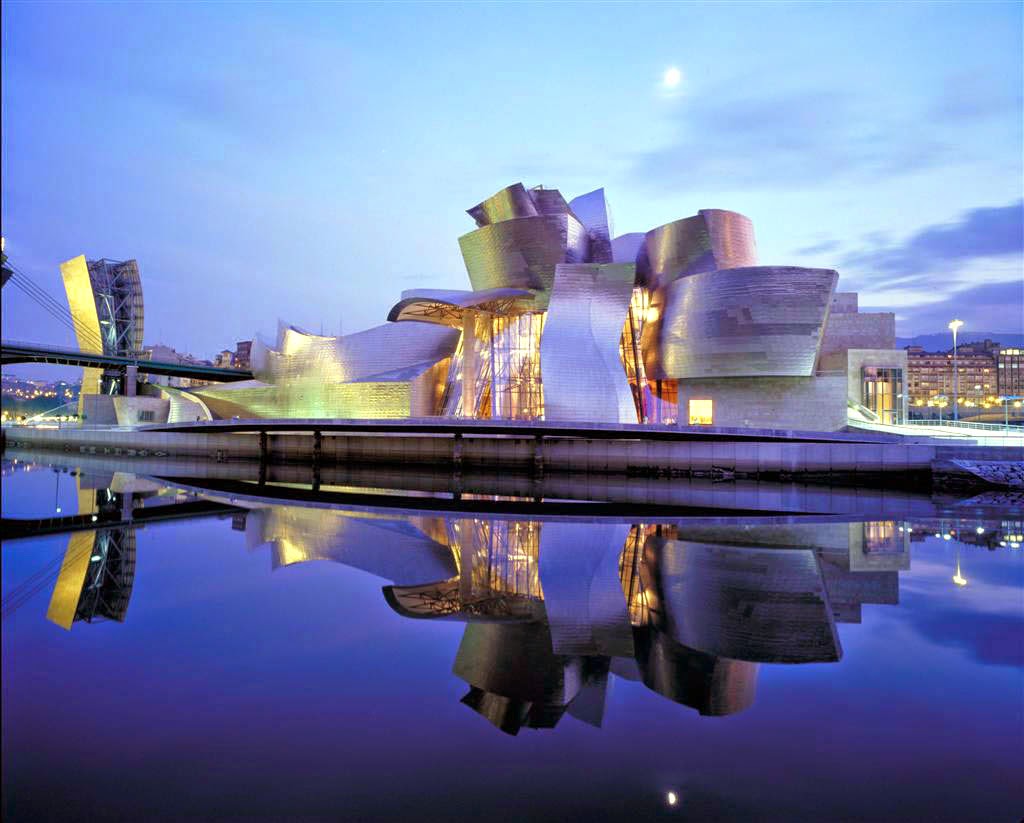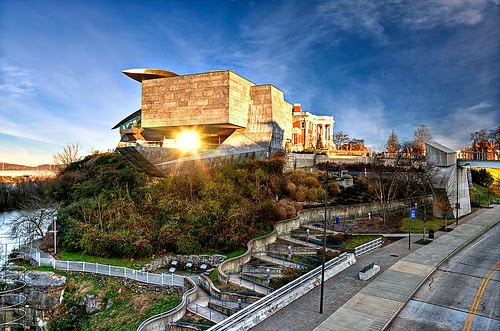Perched on a pinnacle believed to be the sacred nest of the mythical giant hawk, "Tia-Numa", by the Cherokee nation is the new nesting home to the Hunter Museum of American Art. Chattanooga has for decades been predominately known as the home of the Choo-Choo, but it has slowly been transforming itself into an ideal city filled with culture and innovation on a national scale. The Hunter Museum is a large pearl in the necklace Chattanooga has been stringing bead by bead.
The museum opened in 1952 when the former Hunter mansion was bequeathed to the Chattanooga Art Association from the Benwood Foundation, a charitable trust created by George Thomas Hunter. The mansion, built in 1904 in the Edwardian style, was designed by the Cincinnati architectural firm of Mead and Garfield.
In 1975 the Hunter Museum of American Art became simply the Hunter Museum with a facelift to the mansion, a new addition to the museum designed by Chattanooga architects Derthick, Henley and Wilderson, and a donation of forty American paintings from the continued support of the Benwood Foundation.
The trend of designing museums as pieces of art began way back with Frank Lloyd Wright's Guggenheim in New York City.
The tradition continued with masterfully imagined creations by Frank Gehry in Bilbao,
the Louvre's Pyramid by I.M. Pei,
and the Milwaukee Art Museum designed by Santiago Calatrava with its spreading wings stretching out over Lake Michigan.
The metal clad structure pounds its weight into the hilltop with monolithic forms broken up with sweeping silver wings, an angelic Stonehenge.
Debbie Butterworth's wooden steed stands as sentinel at the museum's gate appearing as if in the ready against a Celtic siege.
Glass-bottomed bridges connect the museum to the rest of Chattanooga
while glass railings both inside and out protect museum goers from plunging to their deaths yet let the beauty of the museums forms appear unobstructed.
The museum's collection is allowed to spread its wings on walls painted colors not traditionally seen in art museums or galleries. The effect is languorous allowing you to spend time with each piece.
By not crowding the art you can find distance in viewing each piece. You can stand back and absorb the art without having another piece intrude on your vision. The enjoyment of being able to take time with a piece of art is a benefit of a smaller collection.
The haunting eyes of Tony Scheman's Il Mostro,
the wonderful lyric painting of Thomas Hart Benton,
and the sweet innocence of Charles Hawthorne's The Fish, the Bottle and the Boy can be taken in and savored, rolled around in your mind and implanted to your memory in a way larger museums with pieces crammed in can't.
The contemplative sculptural beauty of Young Woman Reading a Book by Malvina Cornell Hoffman is mesmerizing as your eyes caress her polished cheeks and drift down to the cut lines of her shawl.
The influence of Ingres has been contemporized in Lalla Essaydi's Les Femmes Du Maroc: La Grande Odalisque, leaving the photographic structure of her work embedded in her oversized print, her subject covered in writing.
Glass plays a major part in the Hunter's collection; lit to perfection its fragile quality exposed.
The Venus de Milo appeal of Karen LaMonte's Reclining Dress Impression with Drapery was as sensual and provocative as anything at the Louvre.
Also on display was a traveling show sponsored by Aperture consisting of 130 works by forty-three artists highlighting the process and end results of photographic inspired articles in the New York Times Magazine.
The exhibit is divided into thirteen segments each following a particular article or series of articles based on photojournalism, fashion or portraiture.
You get to see the entire process from conception through the initial notes and correspondences to snap shots and contact sheets and then into final productions in the magazine along with framed images of the artists final picks.
It's a fascinating look into the process of editorial and photographic collaboration and creativity.
Whether your climbing the stairs in the original mansion
or are descending the spiraling glass and metal stairs of the museums newest addition
the Hunter is a museum worth spending time walking through and pausing at its amazing collection and architecture.
THE GALLERY
Lena Dunham as Neoclassical Bust, 2014
Victoria Diehl, photographer
Represented by Cero Gallery, Madrid, Spain






























No comments:
Post a Comment